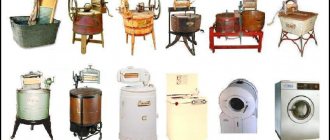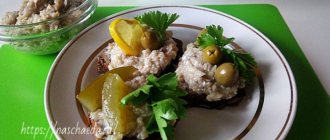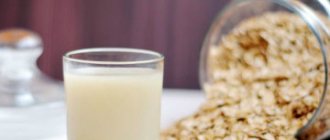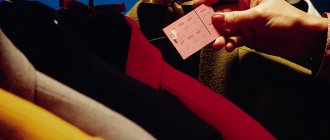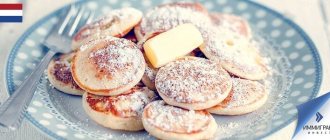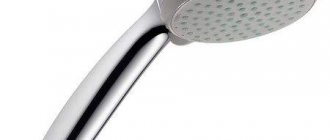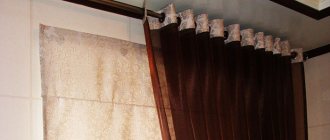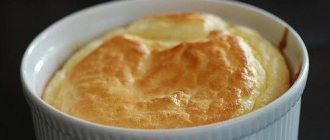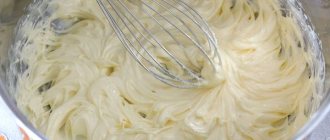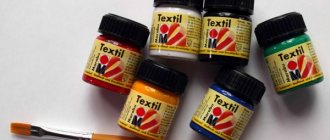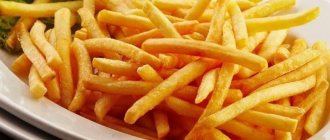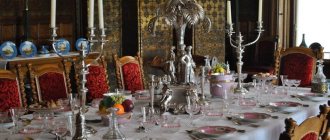The housewife has a lot of troubles: cleaning, washing, cooking and her least favorite activity - ironing things. To make this tedious process simpler and easier, we buy the best and most functional irons, but we completely forget that we also need a good ironing board. Today, manufacturers offer such boards for every taste - from simple budget models to active devices that help iron even delicate and “resistant” fabrics. We will tell you how to choose such an assistant.
The best manufacturers of ironing boards - which company to choose
The stores offer a huge number of ironing boards - made from different materials, with their own folding methods and design features. But it can be difficult to determine how long a particular model will last you at first glance. Therefore, first of all, you need to focus on the name of the manufacturer.
The following brands produce excellent ironing boards:
- Philips;
- Bosch;
- Hausmann;
- Nika;
- Prisma.
You can check out their best models and choose the board that you like best in our article. But is it worth narrowing your search to just a few models? It’s better to spend a few minutes and understand all the nuances, and then find the most convenient ironing board for yourself.
Recommendations: 14 Best Ironing Boards
18 Best Clothes Dryers
6 best ironing systems
Operating principle and structure of the ironing board
Almost all ironing boards are similar to each other - they are simple figured tabletops covered with fabric. The only differences can be found in the design of the supports and folding or height adjustment mechanisms.
There are ordinary folding boards with scissor legs - they are adjustable in only 2-3 positions thanks to support hooks on the back of the tabletop. There are also retractable or folding models that do not have legs at all, but simply slide out of the cabinet or cabinet. Some built-in boards are hidden for the time being in furniture or a wall niche, for example, behind a mirror, and, if necessary, recline, taking a horizontal position.
Also, for our convenience, manufacturers offer models with different “buns” that make ironing more convenient. These are additional elements that expand the functionality of primitive boards.
These include:
1. Heat-resistant iron stand (or reinforced for a steam generator);
2. Cord lock;
3. Extension cord with socket;
4. Net for laundry;
5. Rollers or extensions for ironing sleeves and small items;
6. Folding wings for ironing shirts.
Legs and mounting
The frame, that is, the design and fastening of the legs, also determines the quality of the ironing board. The stability and mobility of the entire structure mainly depend on it. So, according to the type of coupling they distinguish:
- A-shaped legs,
- in the form of an inverted “P”,
- T-shaped.
The board will be stable if the legs extend slightly beyond the edges of the tabletop in width. Compactness depends on the material, so it is preferable to install aluminum, which, despite its lightness, is durable. Plastic or rubber tips are responsible not only for non-slip, but also prevent scratches on the floor.
Pay attention to the method of attaching the legs to the tabletop:
- rivets - they are not fastened securely, the board often folds spontaneously and cannot be repaired;
- screws - become loose due to frequent opening of the structure and cannot be tightened;
- welding;
- bolts – provide reliable coupling and are easily tightened with a wrench.
A significant indicator of the comfortable use of an ironing board is its adjustable height. There are two height fixing mechanisms: smooth and stepped. The smooth adjustment, which gives a greater choice of levels, quickly becomes loose. A board with a step mechanism will last longer, but only offers 2-4 set positions. However, they are enough to install the board at a suitable height.
Types of ironing boards
Despite the very primitive design of the ironing board as such, manufacturers manage to improve classic models, creating more and more new types.
Floor-standing
The standard and most common type of ironing board, which folds out to form a high table. The assembly is compact, extremely simple and convenient if you are used to ironing while standing.
Earlier models had the so-called stepped height adjustment - it is still found on budget boards. Modern designs come with a smooth folding system, which allows you to adjust the height of the tabletop to suit your height.
Also today, hybrid boards have appeared that can easily be converted into clothes dryers and even stepladders - an excellent choice for small apartments that have nowhere to store several different devices.
Pros:
- Good stability;
- Optimal tabletop size (usually 140x35 cm);
- Many models are equipped with a removable cover that can be washed or replaced;
- The set almost always includes a stand for the iron;
- Rubber pads on the legs do not scratch the floor;
- More expensive models have a cord holder or a separate outlet;
- There are functional hybrids on sale with dryers, laundry nets, etc.
Minuses:
- Bulky when unfolded;
- A bit heavy.
Tabletop
“Little sisters” of floor boards with very short legs - 10-20 cm high. As the name implies, such models are installed on a table or any other flat surface, and then used as ordinary devices.
Here the tabletop dimensions are noticeably smaller than standard (usually 70x30 cm), so they are not very convenient for ironing bed linen. But tidying up a shirt or skirt on such a baby is quite possible.
Pros:
- Very resistant;
- Lightweight and compact;
- Simply unfold;
- Easy to store – you can even hang it on the wall on a special hook;
- Absolutely transportable.
Minuses:
- It is inconvenient to iron bed linen, curtains and other large items;
- Not particularly strong and bend easily.
Built-in
Every housewife dreams of such an ironing board. There is no need to look for a storage place for it, and there is no need to carry a bulky device throughout the apartment. And most importantly, such models do not spoil the interior at all, turning into real invisible ones.
A built-in board can be either part of a furniture set or hidden in a separate niche behind a mirror, panel or decorative door. These models are easy to use and just as practical as regular boards, but they are not mobile - they cannot be moved to another room or taken with you on a trip.
Pros:
- Compactness and original design;
- Same functionality as a regular ironing board;
- Convenient folding/unfolding system;
- Possibility to choose any design of the “wrong side” (in the form of a panel, mirror, cabinet);
- Reliable fixation in the working position - such a board will definitely not turn over;
- Withstands weight from 20 to 50 kg depending on the chosen mount;
- They often come with a built-in socket.
Minuses:
- Cannot be moved to another location;
- There are no additional functions (hangers, dryers, shelves for things, etc.);
- High price;
- The design is heavy and requires very reliable fastening.
Transformers
This category includes hybrids that look like a cabinet or chest of drawers with a folding tabletop in the shape of an ironing board. This design saves space in the apartment, while it is functional and practical.
With a little effort, the bedside table turns into a convenient and reliable ironing board, and you can store linen, iron and other necessary things on shelves or in drawers. The main thing is to choose a color and design that is in harmony with the rest of the furniture in the room.
Pros:
- Super functional;
- Very resistant;
- Fits perfectly into the interior;
- You can store a lot of different things on shelves and in drawers.
Minuses:
- Not particularly mobile, although you can still move them from place to place;
- If you place the cabinet too close to other furniture, problems arise with the layout of the board.
Basic requirements for an ironing board
The most suitable model should be selected according to a certain scheme, starting with an assessment of key criteria - the individual qualities of the ironing board and its functionality.
A convenient place for ironing things meets the following requirements:
- Ease. Especially important for portable models. The lightweight model will not be a problem to carry to the chosen ironing place (lit, near an outlet) and unfold.
- Compactness. The folded board should take up minimal space.
- Strength and stability. This quality should not be compensated by the weight and dimensions of the structure. The ironing system stands firmly on the floor, does not wobble or bend under the weight of the iron and clothes.
- Mobility. Ironing on a tabletop that is adjusted in height (“under your arm”) will not cause tension in your arms and back.
- Surface quality – soft, heat-resistant material.
- Area for ironing items of any size, additional space for an iron.
A competent approach to choosing an ironing board also includes consideration of the size of the room where it will be installed. It is necessary to take into account the capabilities of the device and the expected frequency of its use.
You can add other requirements to this list: method of placement and opening, design, availability of additional accessories.
Ironing board selection options
Choosing an ironing board often forces you to make compromises. After all, we are faced with the task of combining functionality and compact dimensions, light weight and reliable design.
Tabletop material
Manufacturers offer several options that differ in price and durability:
1. Pressed slabs
Despite the name that has stuck, no one has been making ironing boards from real boards for a long time. Now boards made of pressed wood are in use: plywood, chipboard, MDF. In order for the tabletop to be strong enough, it is made thicker, which seriously increases the weight of the entire structure. Alas, even under a thick layer of substrate, such slabs gradually become saturated with moisture, swell or delaminate under the influence of high temperatures.
2. Plastic
Ironing boards made of this modern material are very light, but quite strong and durable. Due to the numerous holes, they do a good job of removing excess moisture that accumulates in the upholstery. The main thing is that heat-resistant plastic is used for the production of the tabletop. Ideally, it also has heat-reflecting properties - this will make it easier to iron things on the board. However, in this case the cost of the entire structure will increase.
3. Metal
This is usually steel or aluminum. In the first case, you get a heavy, durable and very strong material. Alas, over time, passing wet steam can cause corrosion with all the ensuing consequences (rusty spots on the backing and cover). If you take lightweight and moisture-resistant aluminum, be prepared for the fact that the board will require careful handling and careful storage - this metal bends too easily.
Work surface size
The choice of the size of the ironing surface depends on the frequency of use of the board, the amount and size of the laundry, as well as the free square meters you have. Manufacturers offer countertops with a variety of dimensions, so finding a suitable option will not be difficult.
We list the most common sizes:
1. The classic board comes with a working surface from 110x30 to 120x38 cm;
2. New models are larger in size - they are produced in sizes from 130x35 to 150x45 cm;
3. The size of the board-cabinet or chest of drawers when unfolded reaches 130x35 cm;
4. Built-in boards on average come with a surface of 128x38 cm, but you can always order custom sizes;
5. Desktop models are the most compact - 70x30 (plus or minus a couple of centimeters).
Upholstery material and cover
Having dealt with the surface of the tabletop, we will consider the types of fabrics that are used for upholstering boards and sewing covers.
Let's start with the latter, because they are the ones who are visible and come into contact with the iron and our things:
1. Canvas - certainly high density, undyed, and ideally even unbleached. This is a great option for everyday use. Clothes from such material do not slip off, the cover can also be washed without problems, but an iron that is too hot can easily leave scorch marks on it.
2. Cotton fabrics - usually these are inexpensive thin covers with bright colors that do not last long. Yes, they are natural and give the ironing board a nice appearance, but if the manufacturer skimped on the dye, steaming white items on such a surface may result in a “decal” appearing on the clothes.
3. Heat-resistant synthetics - now such covers are increasingly found on branded boards. They are non-stick and some even reflect heat, making ironing easier.
4. Carbon fiber is a technologically advanced and very durable material that not only reflects the IR radiation of the iron, but also does not allow hot steam to pass through. Ideal for difficult to iron fabrics like linen.
As for packing, you need to know how certain materials behave under the influence of steam and high temperature:
1. The synthetic padding will deform over time, reducing the quality of ironing - it is better to discard it immediately.
2. Foam rubber is a budget-friendly and also extremely short-lived material, and also not dense enough.
3. Batting – has good elasticity, but accumulates moisture too easily. This padding is only suitable for plastic and metal boards with a perforated tabletop.
Additional functions
Considering the design of standard models, we have already said that ironing boards can have all sorts of additional elements such as shelves and holders. But today there are also more advanced specimens - the so-called active ironing devices.
Ironing boards may have the following interesting features:
1. Supercharging - using a built-in fan, the board cover is inflated from the inside, creating something like an air gap. This allows you to steam rather than iron delicate fabrics, avoiding accidental ironing of folds, stretching of knitwear and deformation of decorative elements.
2. Steam suction – when the fan is turned on in reverse, the reverse process occurs. The air is pumped out from the surface of the board, causing the clothes to temporarily stick to the cover, making it easier to iron. Excess wet steam is also removed, so there are no wet spots left on the upholstery of the board or on the linen.
3. Heating the working surface - a hot board will help the iron smooth out even the most “unruly” clothes.
Which ironing board to choose
1. For students and people who are constantly on the go, a tabletop ironing board with a plastic or aluminum tabletop is suitable - compact, mobile and very light.
2. For a spacious change room or dressing room, you can purchase a transformable cabinet or chest of drawers - save space and money. Just choose a model with a batting backing, as well as a durable synthetic or canvas cover, so that the board does not have to be re-upholstered after just a year.
3. For a small apartment, a built-in board is suitable. It can, for example, be placed in the hallway or even in the living room and decorated in the form of a mirror (panel, painting). But when choosing, give preference to lightweight materials like thermoplastic or aluminum so that the mount can withstand the weight of the console tabletop.
4. For a large family in a private house or spacious apartment, it is better to purchase a full-size floor board with a metal or plastic tabletop 150x40 cm. Ideally, it will be equipped with a heat-resistant iron stand and a shelf for linen. The same board should be chosen by those who use a steam station instead of a regular iron.
Selecting the tabletop material for the ironing board and its size
The strength and durability of the ironing board depends on the material of the tabletop, and the ease of use depends on the size. As a rule, it is made from thermoplastic, aluminum, steel or wood.
Thermoplastic is one of the most successful options for the production of an ironing board. This is a lightweight material, so an ironing board with such a tabletop weighs a little (4–5 kg). Thermoplastic surfaces are highly resistant to high temperatures, steam and moisture and have a long service life.
Wooden countertops are made from plywood or chipboard. This is the most budget option - folding wooden ironing boards cost about 500–1,500 rubles. However, wooden surfaces are not very durable - over time they swell, delaminate and become unusable.
